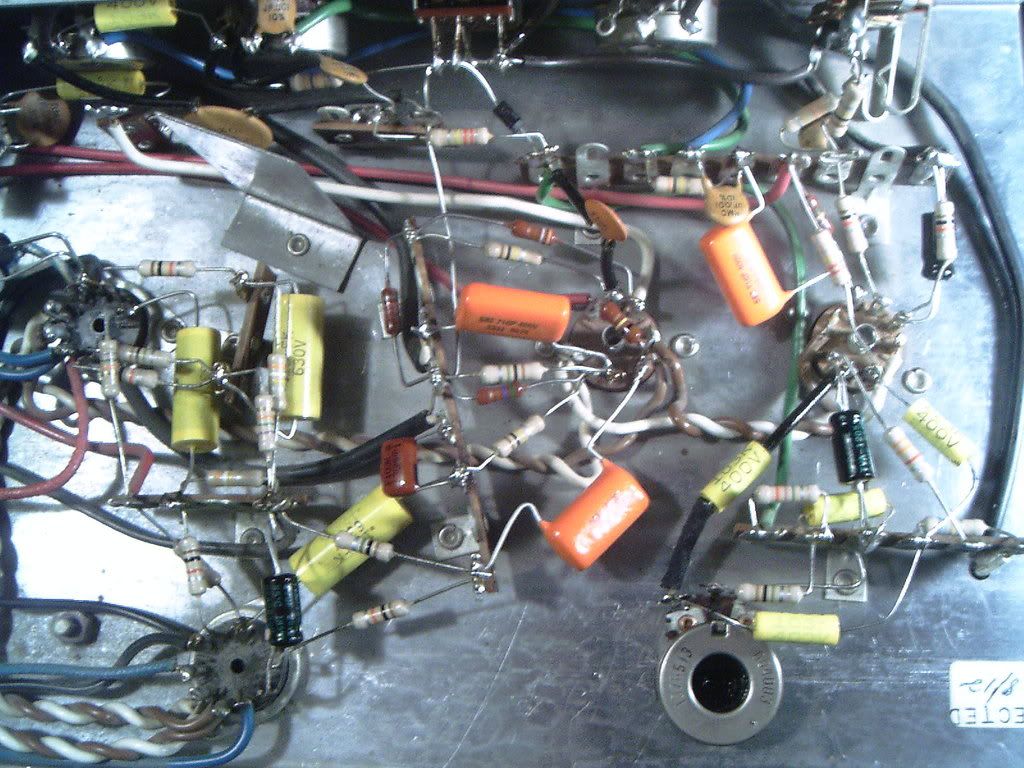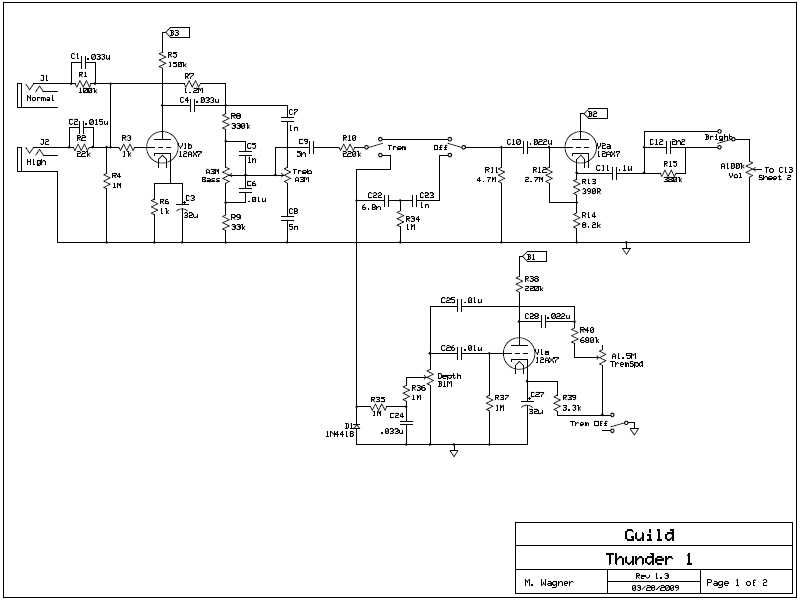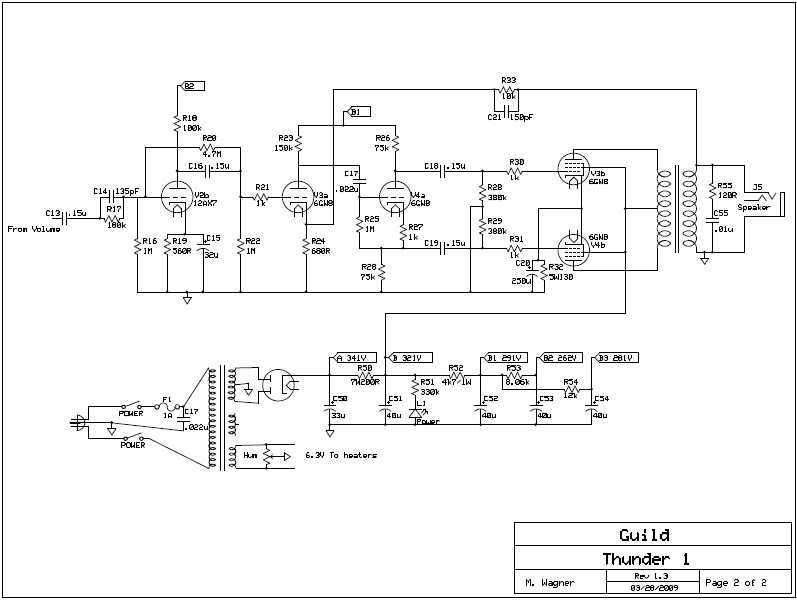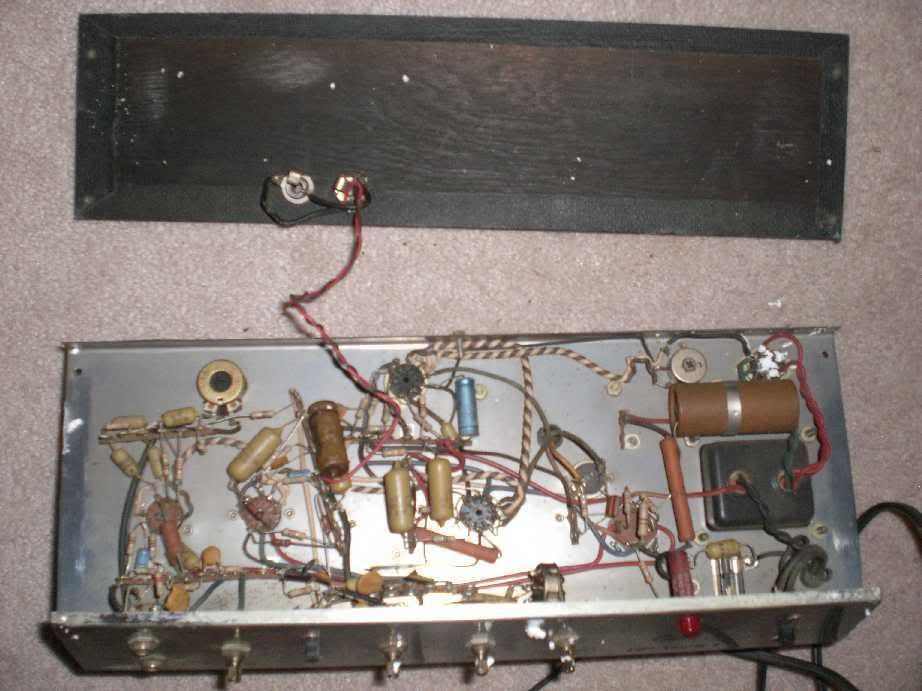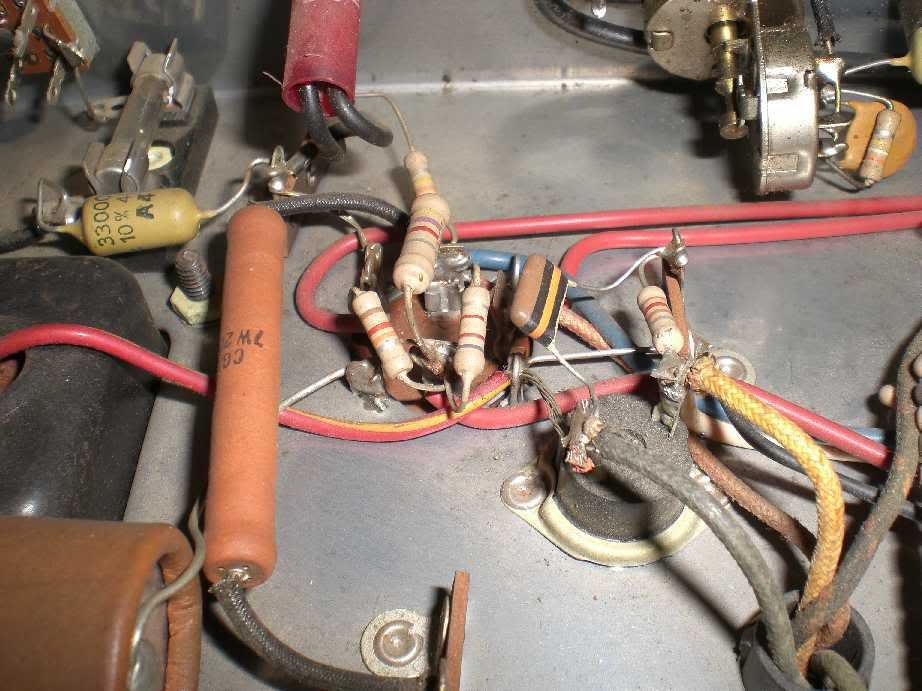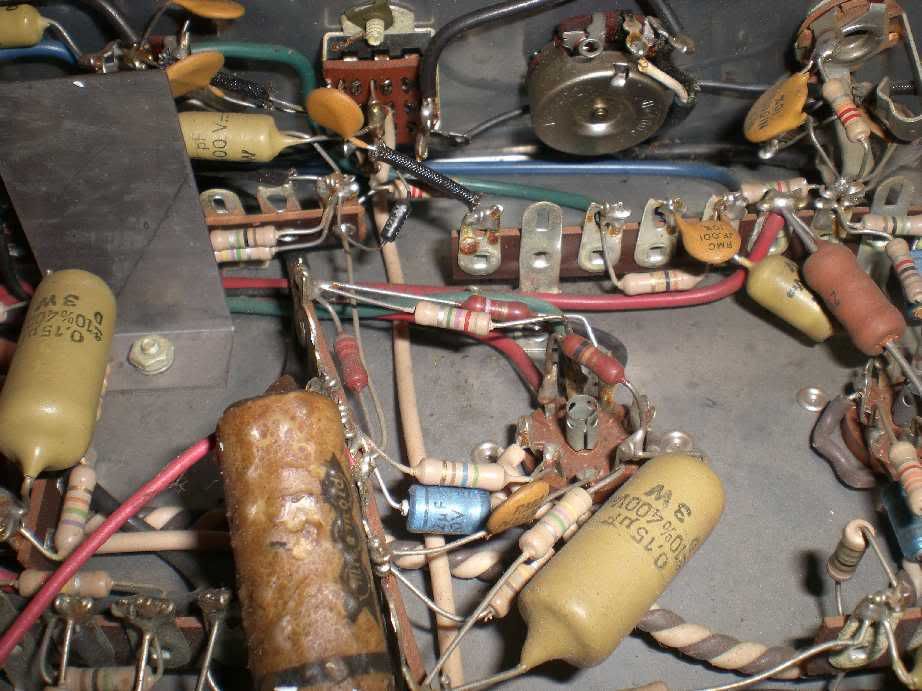It's alive! 
I replaced all the filter caps, rectifier tube, power tubes ( thanks again, coastie!) as well as the other caps but the ones that appeared to function solely for the tremolo circuit. Three prong cord, or course. I was going test voltages before firing it up with tubes, but I had one of those days at work that made me want to take a gamble and claim early victory. So far, I think I won.
I fired it up with the original power tubes in case I had trouble. A bit of crackling ensued, and I remembered having this issue with an old Champ 12, so I put in the new power tubes. No more crackle. At first the power light didn't come on, but lit up once the tubes were heated. I remembered someone mentioning this elsewhere on this forum. The tube cathodes had a nice orange glow and no funny smells. Plugged in a tele and hit a C chord. As every bit as bright as I've read..and that's what I wanted. The tremolo works too!
The only things I've noticed was a little bit of feedback when playing in front of her. It was very faint. It hasn't done it since. Could the original preamp tubes contribute to this? Also, I've had it pop when I turn it off. Not every time. Once rather low, and once rather loud. Could that be a resistor?
I can't get over how pretty it looks. I'll take some better pics. I'm going to plug my digiverb in front of it and break out the Jaguar. :wink:
Thanks so much for the help!!!
I'm going to invest in a new speaker next - probably a budget Weber. Opinions on Alnico vs Ceramic?
I replaced all the filter caps, rectifier tube, power tubes ( thanks again, coastie!) as well as the other caps but the ones that appeared to function solely for the tremolo circuit. Three prong cord, or course. I was going test voltages before firing it up with tubes, but I had one of those days at work that made me want to take a gamble and claim early victory. So far, I think I won.
I fired it up with the original power tubes in case I had trouble. A bit of crackling ensued, and I remembered having this issue with an old Champ 12, so I put in the new power tubes. No more crackle. At first the power light didn't come on, but lit up once the tubes were heated. I remembered someone mentioning this elsewhere on this forum. The tube cathodes had a nice orange glow and no funny smells. Plugged in a tele and hit a C chord. As every bit as bright as I've read..and that's what I wanted. The tremolo works too!
The only things I've noticed was a little bit of feedback when playing in front of her. It was very faint. It hasn't done it since. Could the original preamp tubes contribute to this? Also, I've had it pop when I turn it off. Not every time. Once rather low, and once rather loud. Could that be a resistor?
I can't get over how pretty it looks. I'll take some better pics. I'm going to plug my digiverb in front of it and break out the Jaguar. :wink:
Thanks so much for the help!!!
I'm going to invest in a new speaker next - probably a budget Weber. Opinions on Alnico vs Ceramic?




